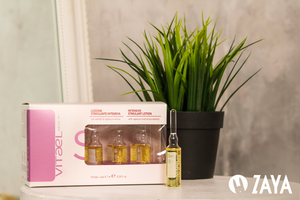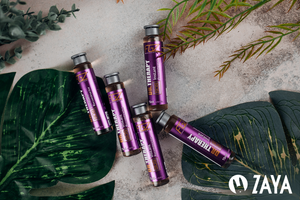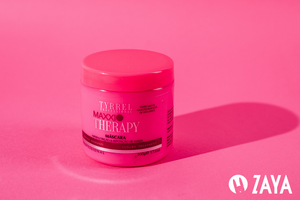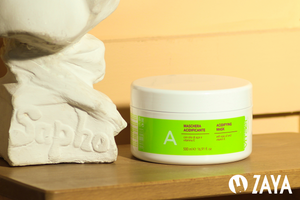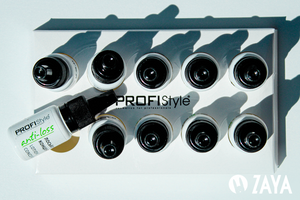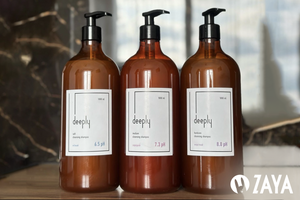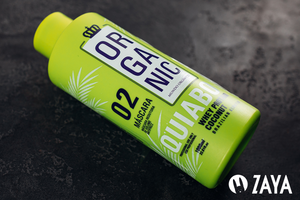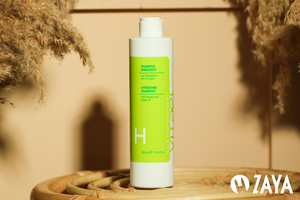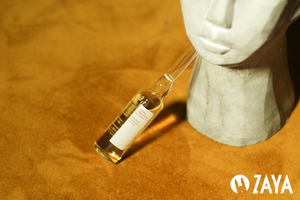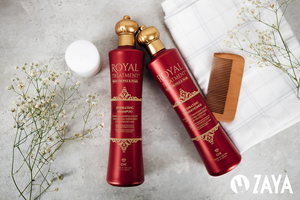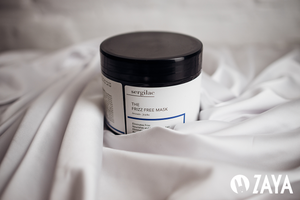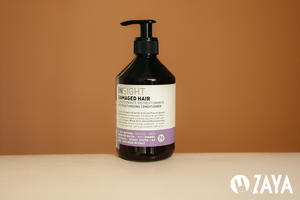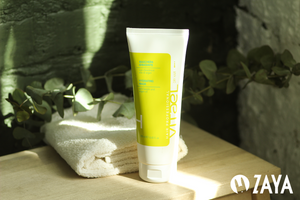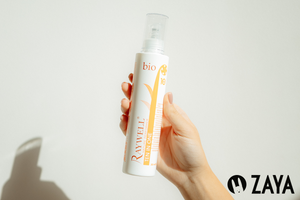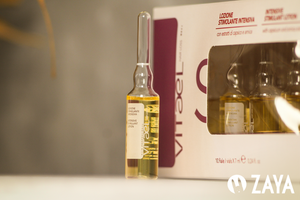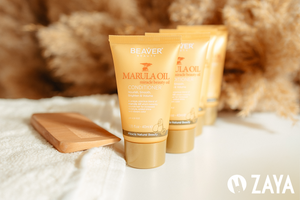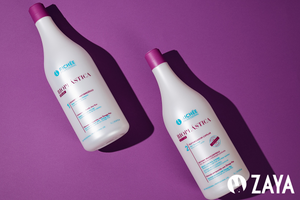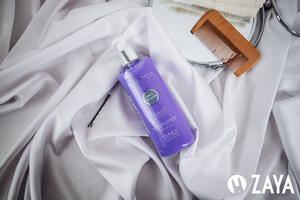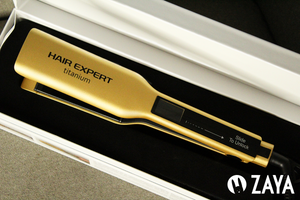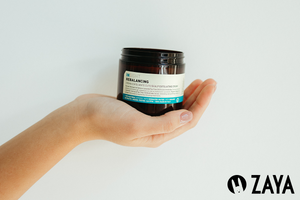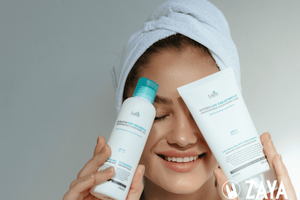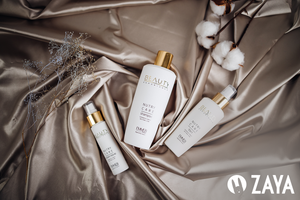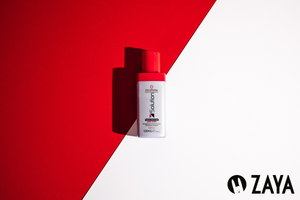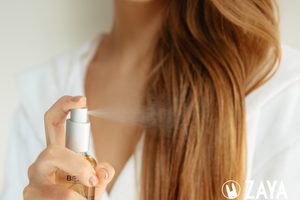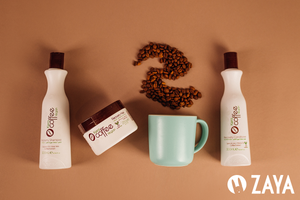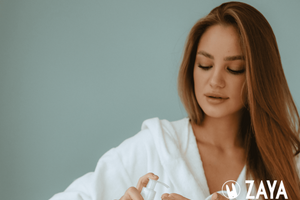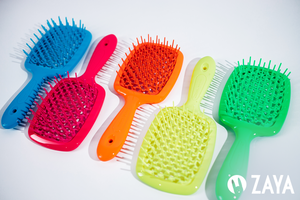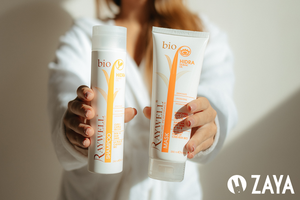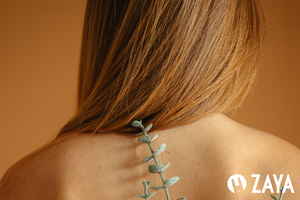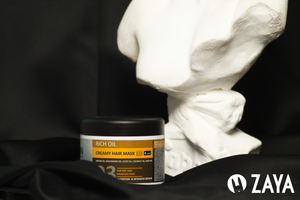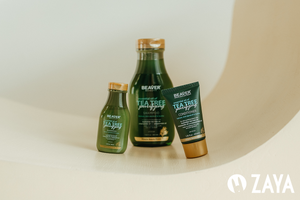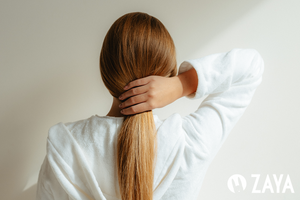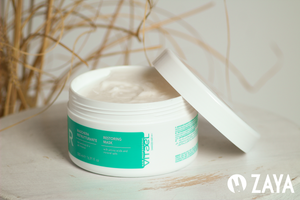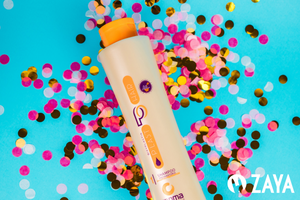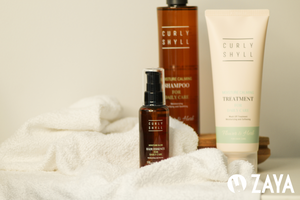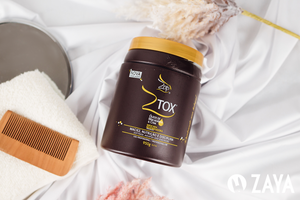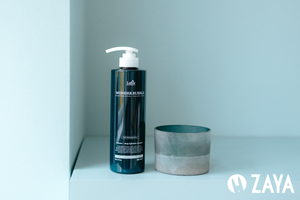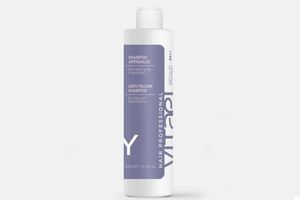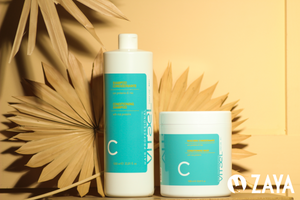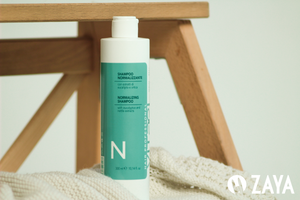Oily hair is a lot of trouble. Shortly after washing, they quickly lose their freshness and attractive appearance. The strands stick together, look downright untidy and even dirty, and stop holding together in the hairstyle. But oily hair type is not a sentence. It is possible to improve the situation. To do this, you need to take care of the right care.
What affects hair oiliness?
The sebaceous glands are responsible for the oiliness of the hair. They are located on the surface of the entire body, including the head. If they work very intensively, a significant amount of sebum is released - this is what sebum is called. And its excess makes the strands oily and sticky, can irritate the scalp and promote the growth of pathogenic microorganisms (fungi or bacteria). Excessive sebum can cause redness, itching, and even dandruff.
The activity of the sebaceous glands can increase due to various factors. Among them:
- Improper care. Excessive sebum can be caused by improperly selected hair cosmetics, improper application techniques, or excessive use of cosmetics. Other possible causes of sebaceous gland activation include aggressive or excessively frequent combing, the use of hot water for shampooing, and excessive use of various styling appliances (such as irons or curling irons).
- Hormonal changes. Often, the activity of the sebaceous glands increases dramatically during adolescence, in pregnant women, or during menopause. This problem can also occur due to constant stress.
- Unhealthy diet. Sebum production increases significantly when you consume fast food, as well as fatty, fried, smoked foods and alcoholic beverages.
- Heredity. Quite often, the tendency to oily hair is transmitted genetically from parents.
- Influence of external factors. Excessive hair oiliness can be caused by dirty air, smoking, etc.
There are cases when hair becomes oily due to taking certain medications. In particular, contraceptives can cause this effect.
How to properly care for oily hair?
To make your hair look good, you need to provide it with comprehensive care. Of course, no one can influence genetics. Also, moving to a more environmentally friendly area can be quite a challenge. But everyone can reconsider their care, adjust their diet and lifestyle.
So, it is recommended to take care of oily hair:
- Use cosmetics designed specifically for this type of hair.
- Wash your hair regularly, depending on the intensity of pollution. Many people believe that delaying washing can reduce the activity of the sebaceous glands. But this is not the case. Do not postpone this procedure if the strands are already dirty. Otherwise, pathogenic microorganisms will multiply on the surface of the scalp and a sebaceous film will form that will be resistant to water. It can disrupt the function of the scalp, cause hair loss or the development of fungal diseases.
- Wash your hair with comfortable warm water. It is best if the water temperature is 30-37 °C. After washing, rinse your hair and hair roots with cool water. Remember that high temperature leads to the expansion of skin pores and activates the sebaceous glands.
- Take care of your hair properly. Wash your hair with gentle movements, first lather a small amount of shampoo in the palms of your hands, then apply it evenly to the hair near the scalp (not the entire length). Massage your skin with your fingertips and rinse off the foam well. Repeat if necessary. If you use a sebum-regulating mask, apply it to the scalp and root areas, and apply conditioner or balm on the contrary, only at a distance from the roots.
- Do not forget about peeling. This product thoroughly cleanses the scalp and helps regulate the activity of the sebaceous glands. Therefore, its use helps to prolong the feeling of freshness of the hair. In addition, peeling can get rid of dandruff and itching.
- Do not leave a towel on your head for a long time. Clean hair should be wet and left to dry on its own.
- Regulate combing. Do not comb the strands for too long, as this also stimulates the active secretion of sebum. In addition, do not forget to wash the comb well, because it accumulates dirt that can worsen the condition of the hair. For oily hair, choose a comb made of wood or plastic that has wide and not thick teeth. Do not use metal accessories. Comb your hair only towards the roots, not away from them, hold the strand in the middle and start from the ends.
- Do not touch the hair too much. Massaging the scalp stimulates the sebaceous glands, and regular stroking or periodic combing contributes to faster hair contamination.
- Avoid synthetic hats or caps. If necessary, choose only natural hats, and if possible, leave your head uncovered, as oily skin needs free access to oxygen (but be sure to wear a hat in the cold).
- Minimise thermal exposure. Women and men with oily hair are advised to dry their strands naturally, without using a hairdryer. You should also reduce the use of other thermal appliances. If necessary, use a hairdryer at the lowest or medium temperature setting and do not forget to wear appropriate thermal protection products. You can also try switching between warm and cold air to avoid overheating the skin. You can also use a diffuser to reduce the impact on the sebaceous glands.
- When creating hairstyles, give preference to products that do not contain heavy oils. Such foams, sprays or mousses can create root volume, while they do not contribute to the rapid contamination of the strands. If you use shine products, you should apply them at a considerable distance from the roots, as they contain oils.
- Avoid going to the bath or sauna. They can significantly worsen the condition of hair that is prone to excessive oiliness.
- Avoid contact with excessively chlorinated or salty water. When going to the swimming pool or swimming in the sea, wear a special cap to protect your hair and scalp.
- Eat a healthy and balanced diet. You should eat more plant-based foods (vegetables, fruits, herbs), and it is also recommended to include cereals in your daily diet. Avoid overtly unhealthy foods.
Regular physical activity and good sleep will also bring health benefits.
What shampoo is best?
For regular shampooing with oily hair, you should choose mild and acidic products - shampoos with a low pH. They can effectively dissolve the oily film and remove impurities. They are also gentle on the skin - they do not dry it out or irritate it. Experts recommend alternating the use of two shampoos - one should have a neutral pH, and the other should have a low pH. You can also use only one product with a pH of no more than 5.5.
You should choose products that contain various useful components, including
- herbal extracts, such as aloe, chamomile, nettle, lemon balm or eucalyptus;
- fruit extracts, such as citrus fruits or apples;
- various vitamins and minerals, such as B vitamins and zinc;
- absorbents (they absorb excess fat);
- antiseptics (prevent the growth of pathogens);
- antimicrobial components (also help prevent infectious diseases).
In addition, the chosen shampoo should balance the level of activity of the sebaceous glands, soothe the skin and strengthen the hair.
A good choice for daily use can be:
- VITAEL NORMALISING SHAMPOO. This is an Italian product that is specially designed to suppress excessive sebaceous gland activity. Therefore, it not only cleanses hair and skin well, but also normalises sebum production. It also contains components that inhibit the activity of fungi and bacteria. The shampoo is very well tolerated even by hypersensitive skin, and the eucalyptus and nettle in its composition give freshness for a long time.
- Deeply Normalising Shampoo. This shampoo also helps to get rid of excessive sebum synthesis. It also provides a deep cleansing of the hair and scalp from dust and styling products. It contains tea tree extract, which has sebum-regulating properties and is also a good antiseptic and antimicrobial agent. Its use helps to soothe irritated skin and provide additional moisture to the hair, making it softer and more manageable.
- Insight Rebalancing Shampoo. This shampoo contains a complex of organic extracts that provides deep cleansing, eliminates grease and provides good hair care. Using this product helps not only to suppress sebum synthesis, but also to restore hair and soothe irritated skin. Thanks to it, the strands receive a dose of freshness, soften and become easier to comb.
Don't choose 2-in-1 products for oily hair care, as the savings are not worth it. If a product combines the action of both shampoo and conditioner, it is highly unlikely that it will be able to cope with the problem.
Extra moisture and nourishment for oily hair
Oily hair care should be comprehensive. They need to be moisturised and nourished. And the right products will definitely not make the strands more oily or heavy. On the contrary, they will nourish the curls, satisfy the lack of nutrient deficiencies, give elasticity and strength.
Regardless of hair type, all hair needs conditioning after washing. Shampoo removes dirt but leaves behind raised cuticle scales. Therefore, hair that has dried without using conditioner is duller and more vulnerable to external influences. Conditioner closes the cuticle, helps to retain nutrients and moisture inside the hair shaft.
For additional nourishment, use special masks that help restore the microbiome (the balance of beneficial bacteria on the scalp) and prolong hair cleanliness. Sometimes masks need to be selected only taking into account the condition of the tips and the needs of the strands along their length (of course, such products are applied only away from the root zone).
And to protect the strands from the effects of warm air, styling products and sunlight, you can choose VITAEL DRY HAIR SPRAY CREAM TEN IN ONE. This is a unique Italian product created using innovative technologies. It can quickly make your hair shiny and full of energy, as well as provide comprehensive protection. Thanks to this product, hair:
- shiny, moisturised and silky;
- disciplined along the entire length;
- remains reliably protected from heat and/or external factors;
- receives a significant amount of nutrients;
- looks healthy, bright and truly alive.
The spray cream is very easy to use. It does not overload the hair and facilitates styling.
Additional recommendations from trichologists
Special cosmetic procedures can be used to reduce the activity of the sebaceous glands and improve the condition of the hair. These can be the following hardware techniques:
- Mesotherapy. This is an injection of biologically active substances into the skin of the scalp to restore and stimulate natural metabolic processes. Mesotherapy is one of the most effective and safe methods of hair improvement. It is almost painless and provides a long-term effect.
- Ozone therapy. This procedure improves blood circulation, removes toxins, helps to saturate the scalp with useful substances, stimulates epidermal renewal and really stabilises the sebaceous glands. It can be injected (as mesotherapy) or minimally traumatic - through a cap on the head.
- Laser hair treatment. This is a painless method of treating oily hair that stimulates hair growth and increases blood circulation in the scalp. It also reduces the oiliness of the scalp and helps to improve the appearance of the hair.
- Peeling. This is a cosmetic procedure for removing the keratinised layer of the epidermis. Peeling allows you to perform a deep cleansing procedure: along with skin particles, it removes excess sebum, dust and sweat, all dirt and residues of styling products. This allows the cells to be saturated with oxygen faster, improves blood flow to the hair follicles, strengthens the hair roots and accelerates hair growth. At the same time, the curls become less oily and do not dry out along the entire length.
- Plasmolifting. The plasmolifting procedure involves the injection of the patient's own platelet-rich blood plasma into the skin. It is aimed at improving the condition of the scalp, strengthening and "awakening" hair follicles, which leads to a significant reduction in hair loss and intensive hair growth. Plasmolifting is absolutely safe. It does not cause allergic reactions and other side effects.
- Microcurrent therapy. It involves direct microcurrent exposure to hair and skin. This is done with the help of a special comb. The procedure is very comfortable for the patient and causes only pleasant sensations. After the procedure, the hair looks more lively and healthy. The scalp begins to breathe.
It happens that despite good and carefully selected care, the state of hair health only worsens. In addition, oily hair can be combined with other unpleasant symptoms, such as dandruff, itching, hair loss and brittleness. In such cases, you should not self-medicate or self-diagnose, but seek advice from a trichologist.
Excessive hair oiliness and other symptoms associated with this problem can be caused by alopecia, hormonal diseases (such as polycystic ovary disease or thyroid disease), dermatological problems (psoriasis or seborrhoeic dermatitis), digestive tract disorders, etc.
The trichologist will examine the patient and conduct the necessary tests, and if necessary, recommend a consultation with related specialists, and then prescribe treatment. Sometimes, in order to maintain a stable scalp condition, it is necessary to follow a lifelong diet and use medications (ointments, lotions, special shampoos, etc.).



























